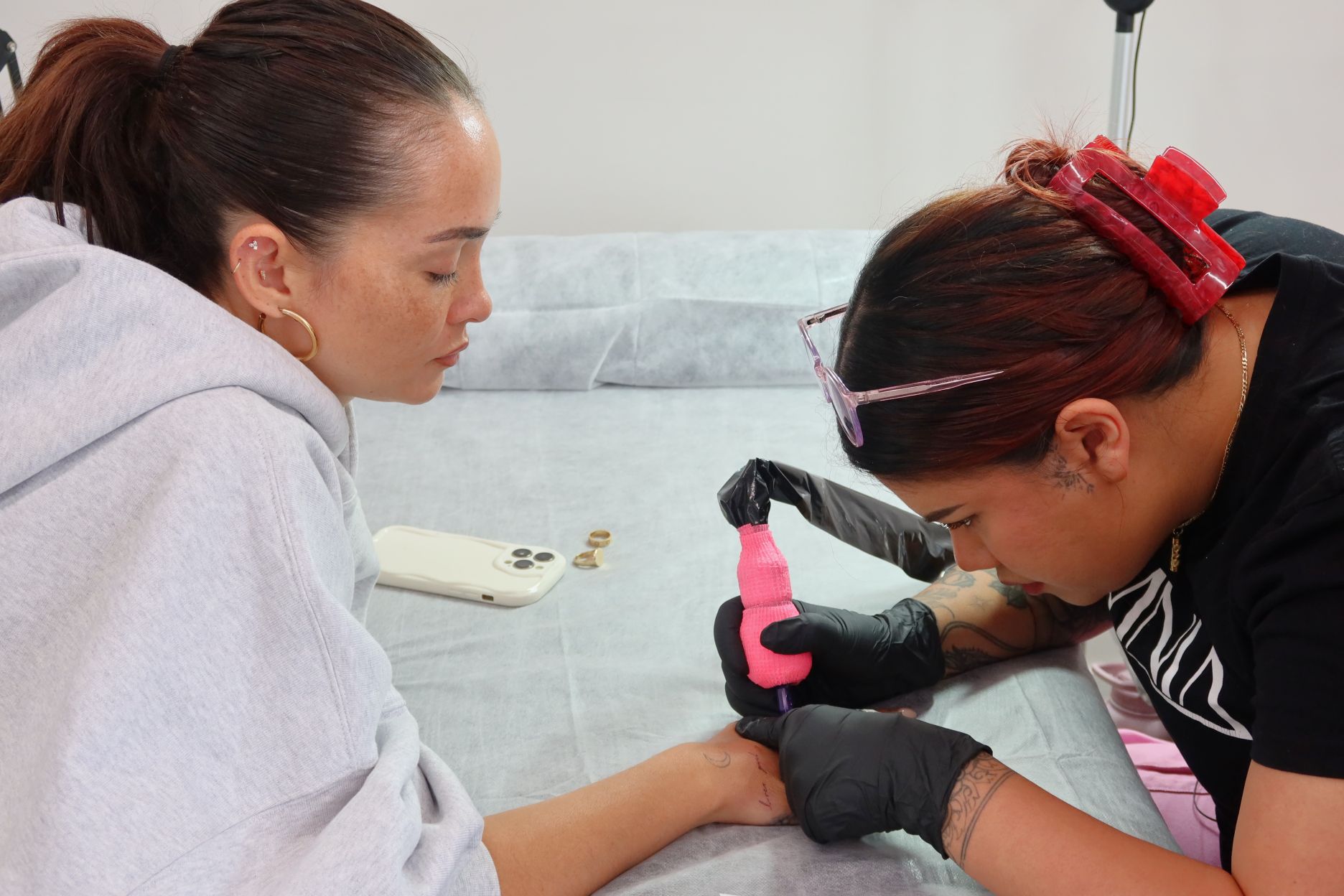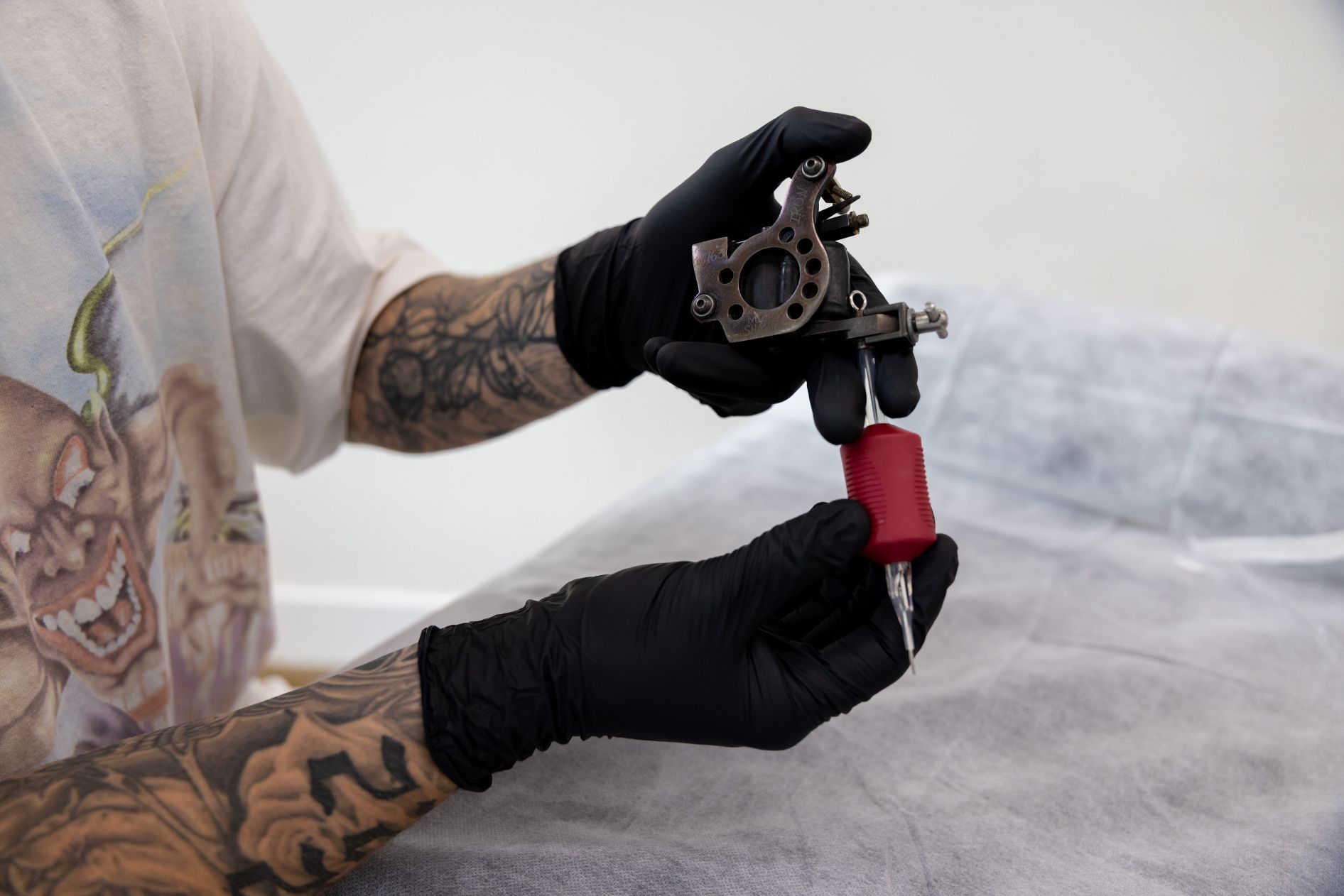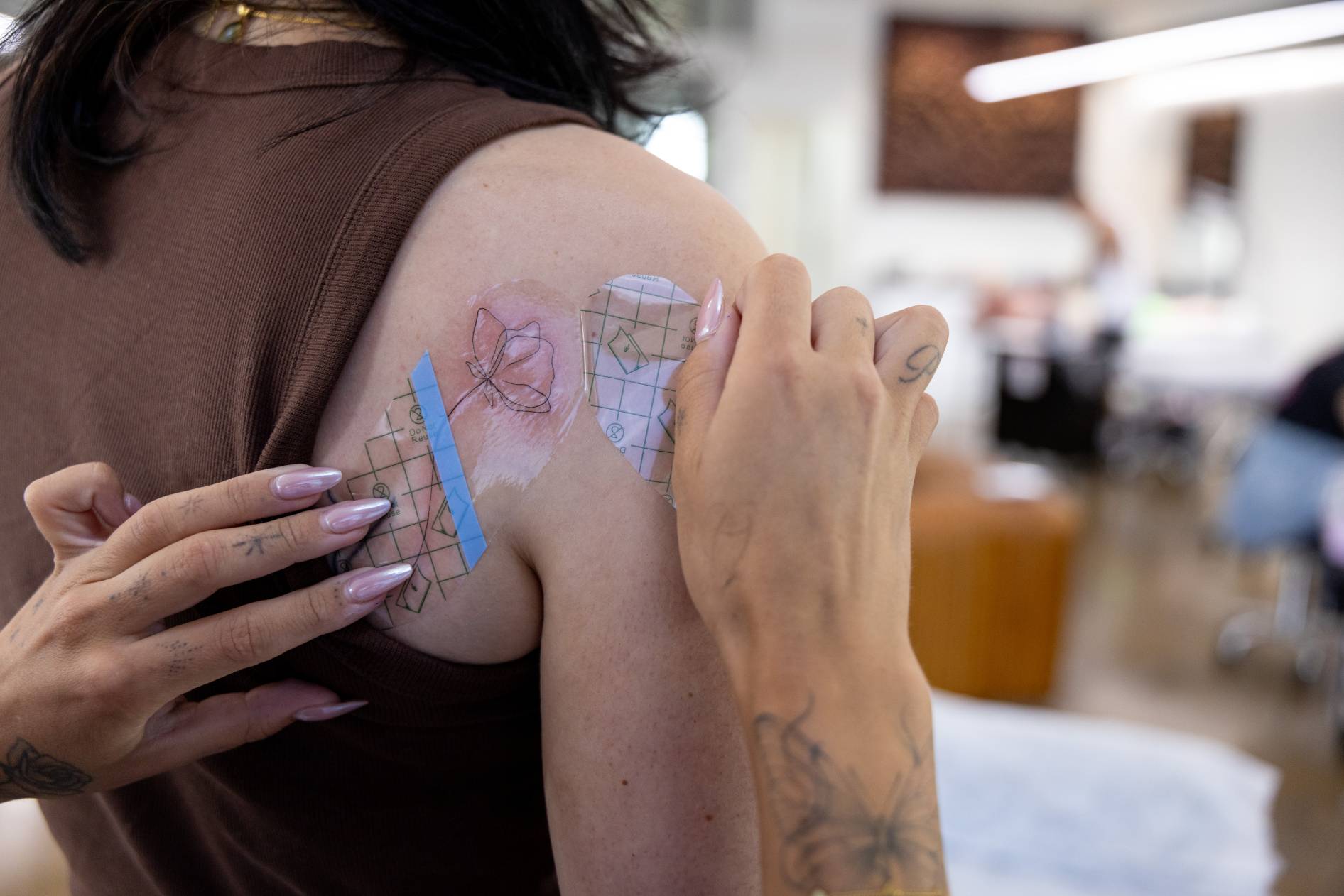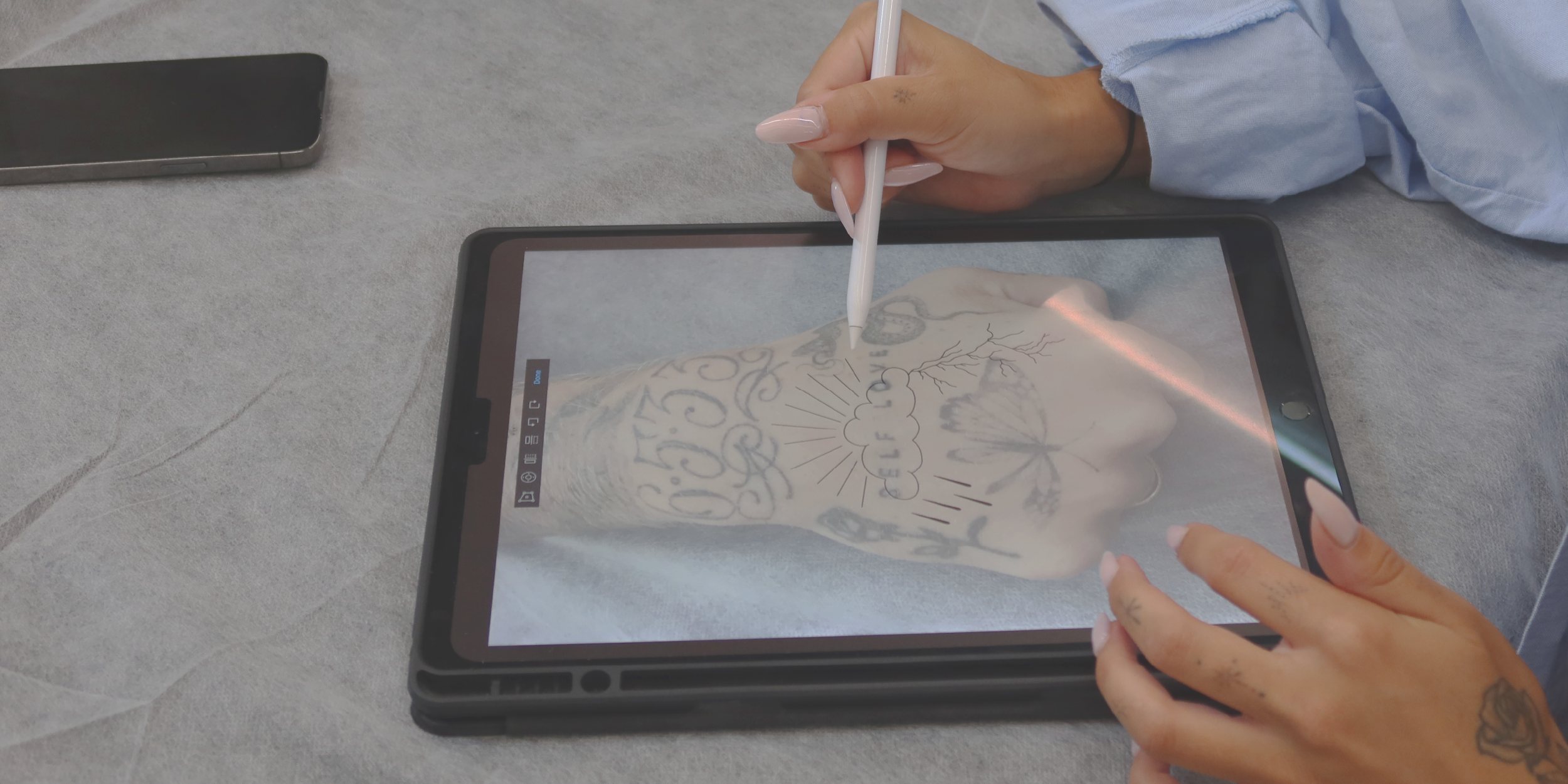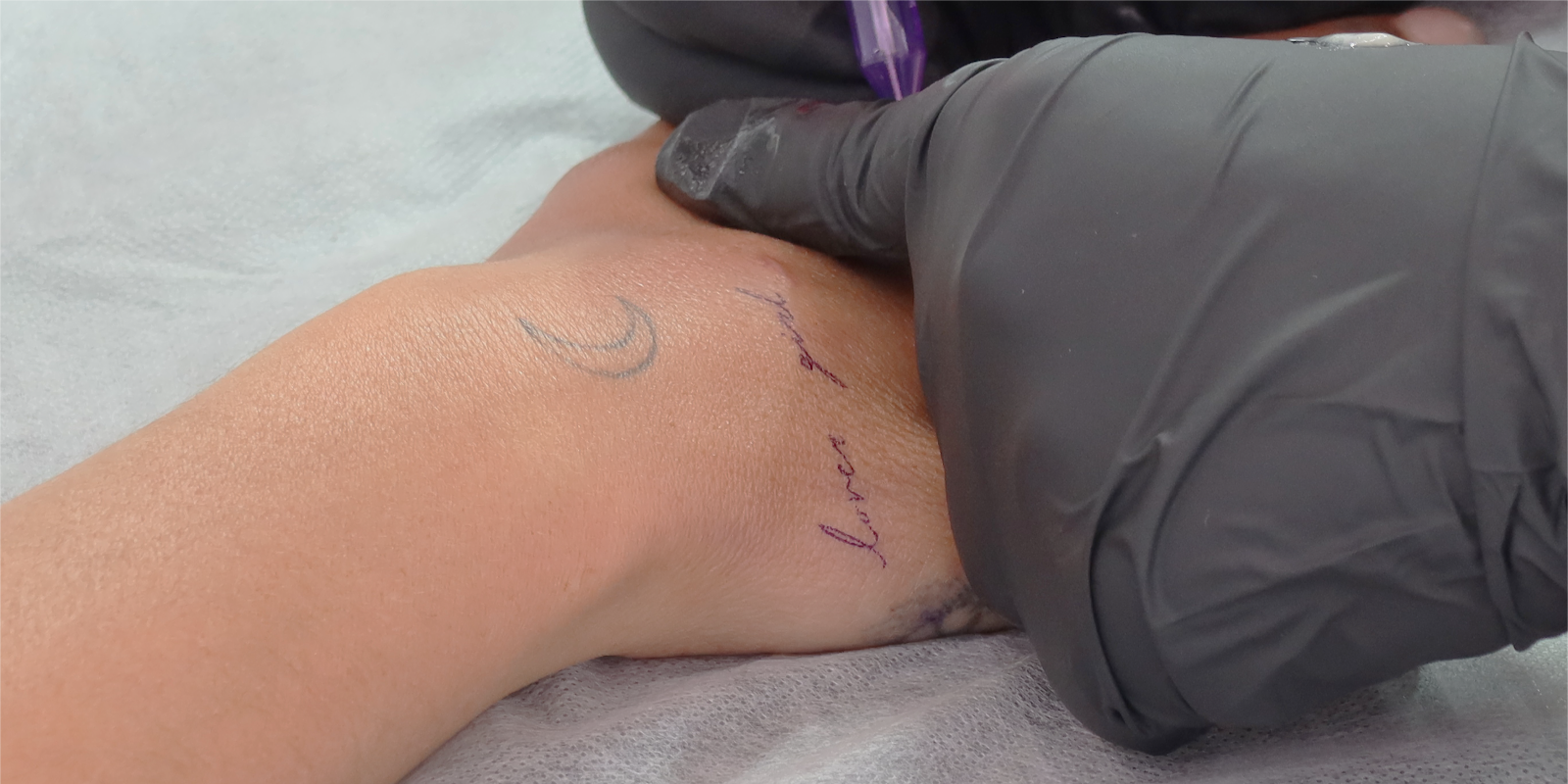Fine line tattoos have taken the industry by storm, becoming one of the most popular styles of the moment. But with their rise in popularity comes a wave of misconceptions. In this blog we’ll break down some of the common myths about fine line tattoos and what you need to know if you’re learning how to tattoo for beginners.
MISCONCEPTION #1: FINE LINE TATTOOS DON’T HURT
A common belief is that fine line tattoos are painless because they use fewer needles. And while it’s true that they often use a single needle or a smaller cluster, the pain level is more influenced by the tattoo placement and individual pain tolerance. For example, tattoos along the ribs are still often painful regardless of the tattoo type. The takeaway? Communicate with clients that they should still expect a level of discomfort, just like with any other tattoo.
MISCONCEPTION #2: THEY ARE EASIER TO EXECUTE
Fine line tattoos may look easy to do, but their simplicity is deceptive – fine line tattooing takes serious skill, precision, and attention to detail. They require a steady hand, precise control, and a solid understanding of the needle depth and ink flow.
Using the best tattoo equipment for beginners can make a huge difference in developing technique.
Fine line tattooing isn’t something that you can learn overnight – it requires a solid foundation of knowledge and practice. Enrolling in our course is the best way to kick start your learning journey and develop the skills required to become a fine line tattoo artist.
MISCONCEPTION #3: FINE LINE TATTOOS ARE ALWAYS SMALL
While fine line tattoos are often associated with delicate, minimal designs that fit neatly on a wrist or behind the ear, the technique itself is not limited to any size. Fine line tattooing can be applied to larger, more detailed pieces such as intricate florals, large pieces featuring flowing lines, or portraits that include finer details and shading.
MISCONCEPTION #4: THEY STAY CRISP FOREVER
The truth is that all tattoos fade over time, and fine line tattoos are particularly prone to softening. This is because they are often simple tattoos, with thinner lines that contain less ink, so they can be prone to breaking down quicker. To extend the longevity of fine line tattoos, clients should choose placements with less friction, follow proper aftercare instructions and use sunscreen to protect the tattoo from sun damage.
As a tattoo artist, educating clients about the common misconceptions of fine line tattoos will help them make informed decisions, and ensure they love their tattoos for years to come. If you’re looking to master fine line tattooing, our online tattoo training can help you build the skills needed to create clean, precise designs. Speak with one of our course consultants today to learn more.

